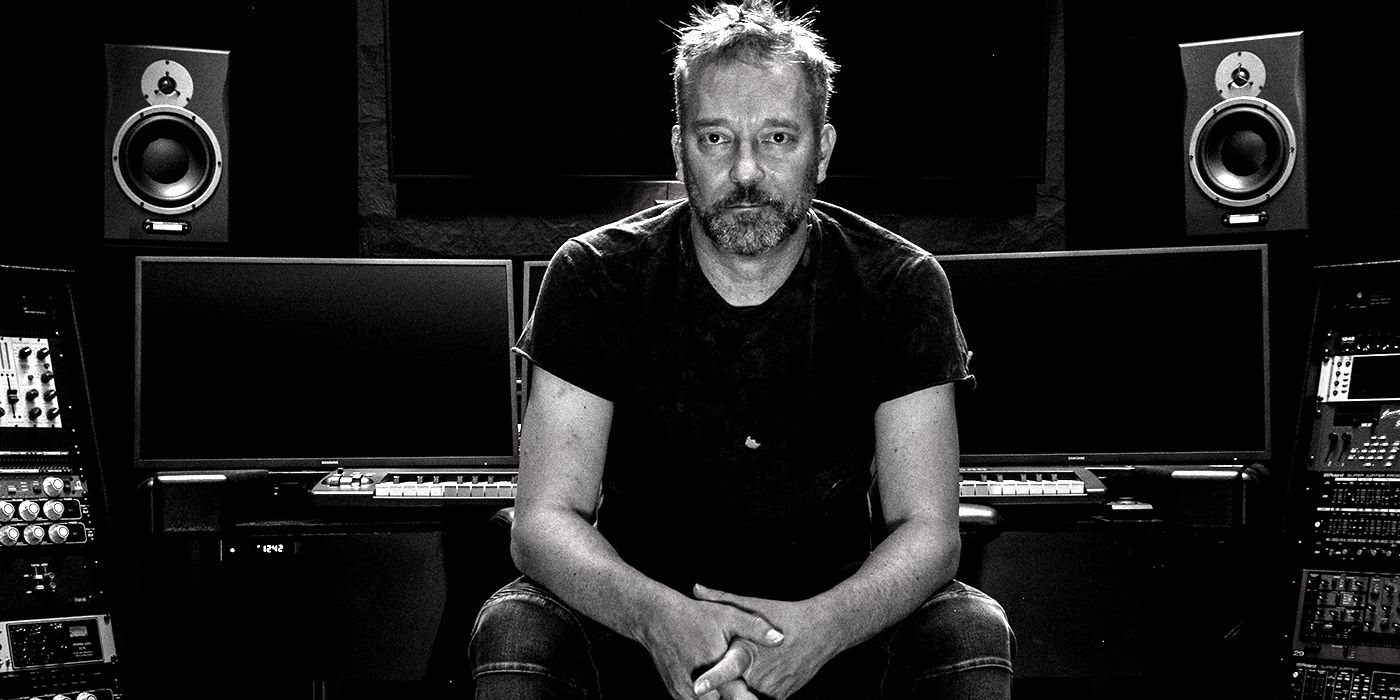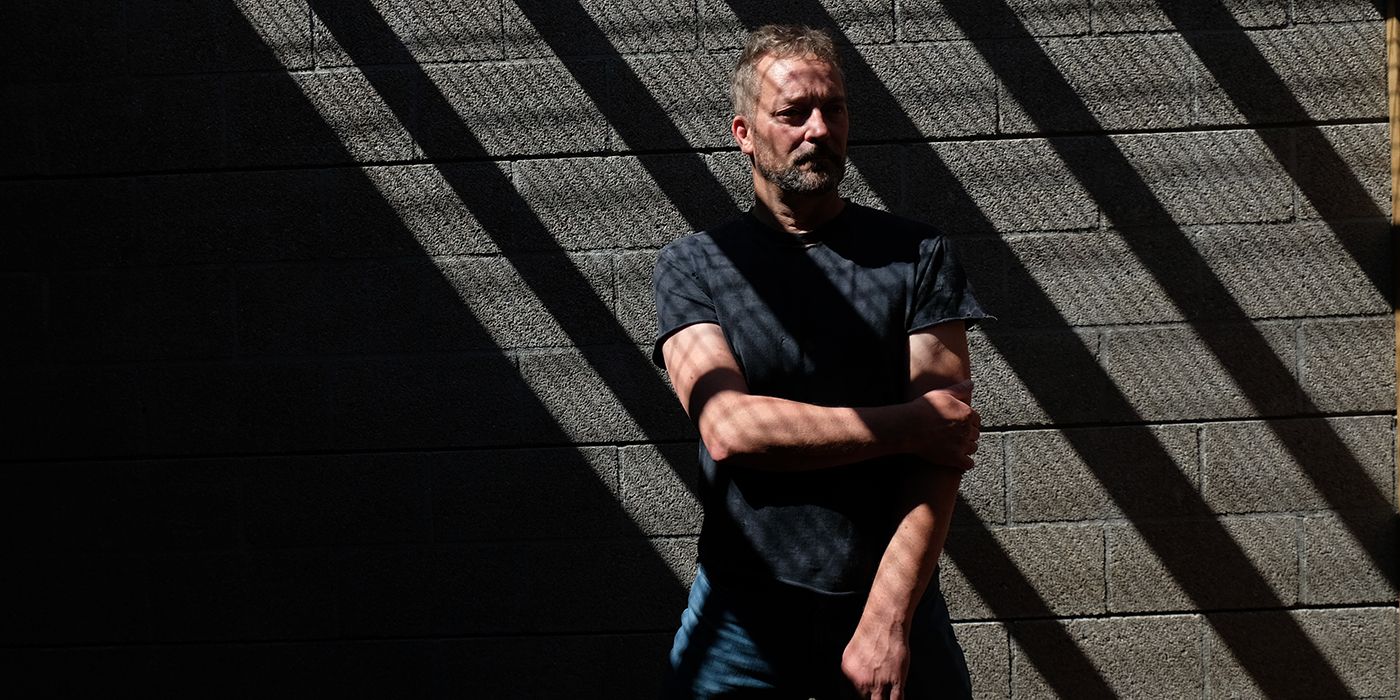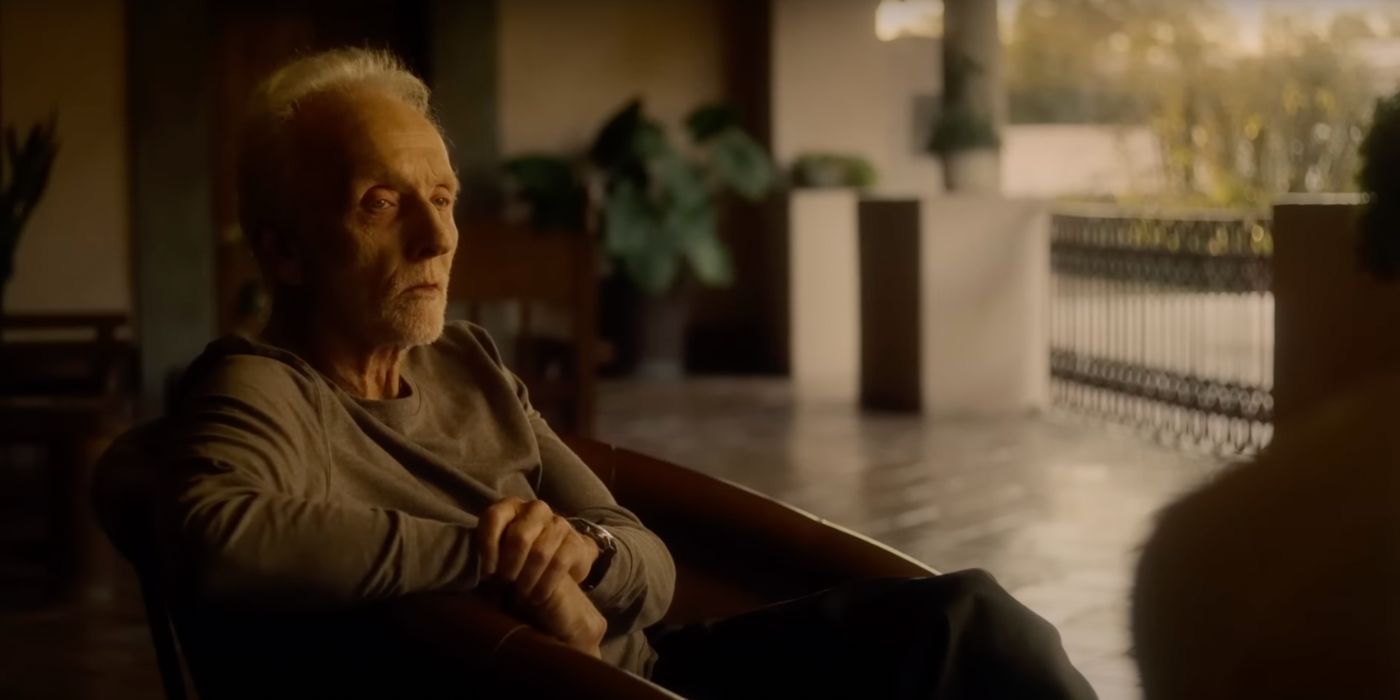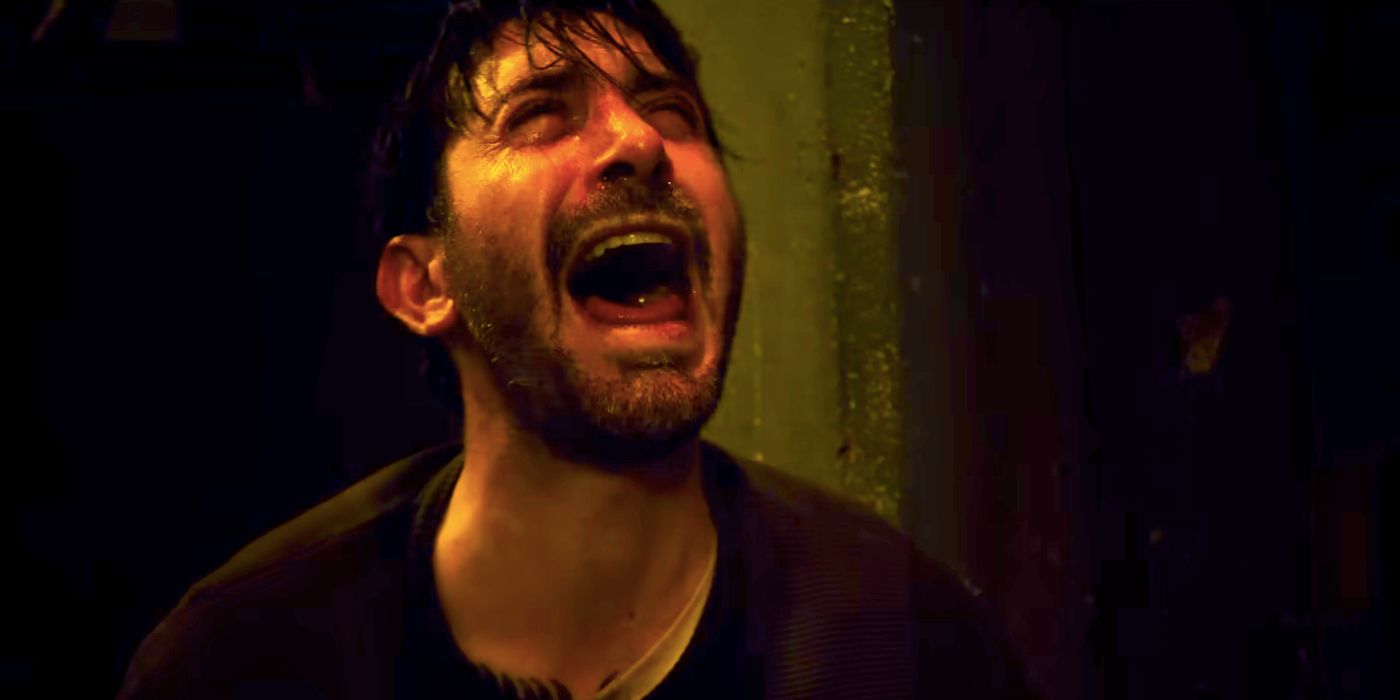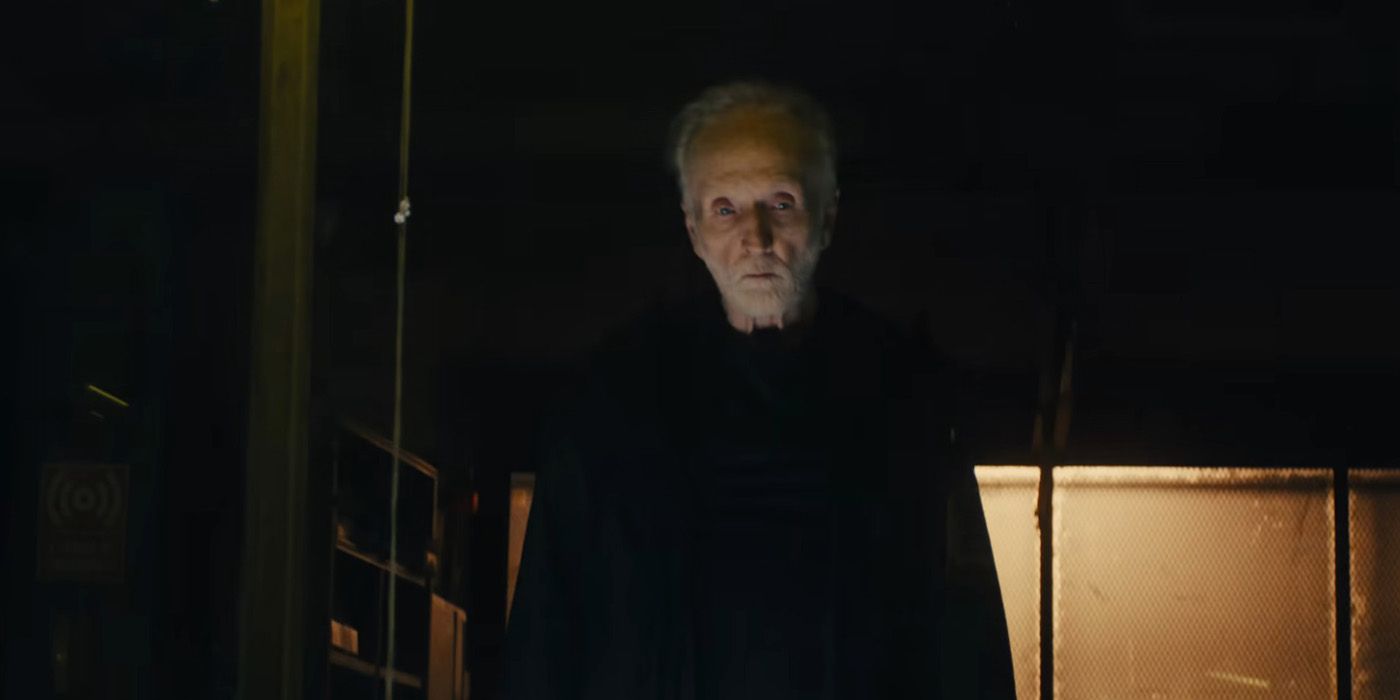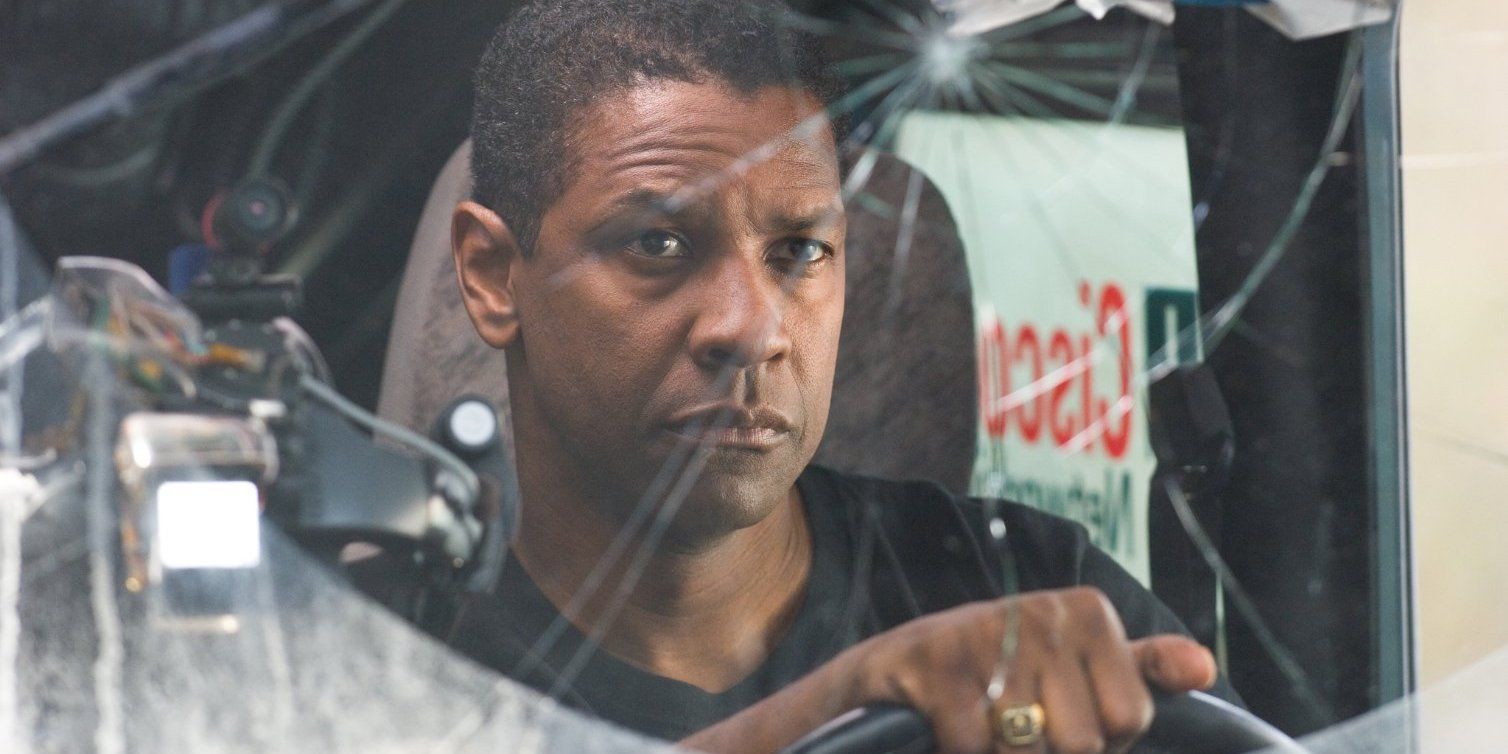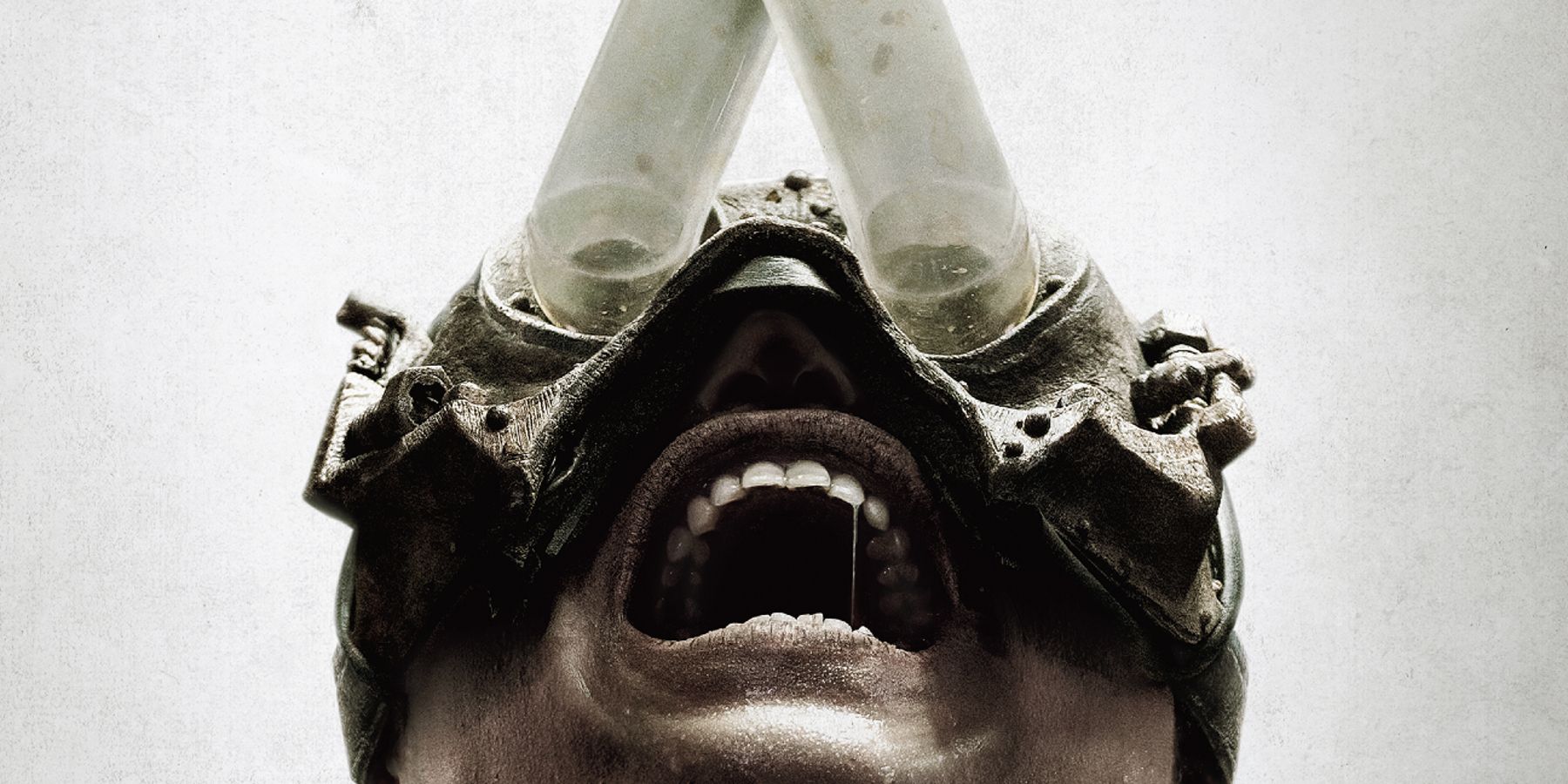Summary
- Composer Charlie Clouser reflects on his 20-year journey with the Saw franchise, expressing gratitude for the dedicated fan base.
- He discusses the expansion of the score for Saw X, using more emotional and gentle melodies to follow Tobin Bell's character's storyline.
- Clouser finds creative excitement in searching for new sounds while also incorporating familiar sonic elements that are synonymous with the Saw films.
After 20 years on the big screen, Charlie Clouser is back with many other franchise vets for Saw X. The former Nine Inch Nails performer has composed the score for every movie in the horror franchise, being one of the few creatives to be across nearly every installment alongside director/editor Kevin Greutert and star Tobin Bell.
Having been absent from 2021's Spiral, Bell returns as John Kramer for Saw X, with the story set between the first two movies and following the iconic Jigsaw killer as he is conned into believing his advanced brain cancer was cured with an experimental surgery. Kramer turns his bloody machinations loose on the scammers with the help of Shawnee Smith's Amanda for his most personal game yet.
As the sequel continues to score rave reviews from critics and audiences alike, Screen Rant spoke exclusively with Saw X composer Charlie Clouser to discuss the new installment, reflecting on the franchise's 20-year legacy, crafting a more emotional soundscape for the movie and the iconic "Hello Zepp" theme.
Charlie Clouser Talks Saw X & Franchise's 20-Year Legacy
Screen Rant: Saw X is a great movie, tied for my second favorite in the franchise with the first sequel. You have been on this franchise since it launched, you are one of the few outside of Tobin, Mark and Oren to still be with this franchise to this day.
Charlie Clouser: And Kevin, our director!
And Kevin, yes! It's crazy to think that we are now up to 10 and 20 years later, how does it feel for you, having been a part of this since it launched to now be where we are now?
Charlie Clouser: It's pretty wild, although in some corner of my mind, it feels sort of like being in a band that just won't die and like going out on tour again. I'm constantly amazed that the fan base is so dedicated and up for it, and they've stuck with the franchise, and get into excruciating detail about analyzing the characters, and the linkages, and the interrelationships between their little teasers, and bits and pieces in the various sequels. Of course, when we made the first one, we didn't know it was going to turn into a global juggernaut of a movie franchise.
I tell this story all the time, but I still have a fond memory of James Wan, as we were finishing up the sound mix and post-production on the first one, sort of saying, "Well, if this thing winds up going straight to video, I promise I'll rent a movie theater, so we can all see our names on the big screen at least once." Because you know when you've done good work, and you've done your best, and you think it's the greatest thing ever, but you never know if something is going to find an audience, whether it's a record or movie. There's a million ways it can all go sideways before it really resonates with the viewer, so it's extremely gratifying and reassuring that what we thought was good has found its audience, and I guess they think it's good too, so that's awesome.
You guys have landed a "Certified Fresh" rating for — I hate to say it — the first time in the franchise. Obviously, the quality of Saw X movies is down to the creatives more than you, but how does it feel for you still to see that this is the best-received one so far?
Charlie Clouser: I'm, again, reassured by that, and I think it's in large part due to Tobin Bell's performance, and the sort of calm magnitude and dignity, I guess — it's a weird word to use when you're talking about a serial killer maniac. But just the way he presents the character, and adds a little bit of depth and possibly encourages a little bit of sympathy on the part of the viewers to his plight. A big part of that, of course, is the producers, directors and the writers who have been able to craft a storyline that allows that to come to the front, but every time I see Tobin on screen, I think, "Give him more screen time, this guy's fantastic!" He's very engrossing and engaging to watch, even when he has such a restrained kind of delivery, which is part of the character.
He's one of those character actors who I'd always spotted throughout my entire career. Like, do you remember that Tom Cruise legal drama, The Firm? When Tobin plays the sort of silent Norwegian assassin or whatever. I remember seeing that movie, whatever, 20 years ago, and thinking, "Wow, who's that guy? Put him on screen more." A big part of it is just due to his delivery and his presence on screen, and I'm so glad that this movie really featured him much more than just being a disembodied voice over a loudspeaker or whatever.
With him getting more screen time, how did that affect your approach to scoring the movie? Did you look for more dramatic tones versus the kinetic thrills of earlier movies?
Charlie Clouser: Absolutely. In the large bulk of time, in many of the previous movies, I'm kind of scoring it from the victim's viewpoint, to some degree, that there's all these wild menacing sounds coming at the audience in the same way that the trap or this bad situation is coming at the victims. So, for Saw X, the whole sort of first third of the movie is following Tobin on his quest for this cure for his brain cancer, and how there might be hope, and there might be an optimistic view of the future. It was great to be able to follow that, there have been little snippets of that in previous movies, where there have been cues that are much more emotional and gentle as they reveal bits and pieces of his backstory.
But they're usually little islands within the stream of mayhem, so it was great to kind of follow a much longer arc over the whole first act of this movie, and there were a lot of musical techniques, motifs and sounds that I was using in that arc of the story that didn't really find a home in earlier installments in the franchise, because there just wasn't that much time to build a longer curve within the score. On this one, I used mournful cello melodies, and these disembodied distant female vocal sounds, and things that would have felt out of place, out of character, anywhere else in the franchise, but it was fantastic that the story allowed a little bit of an expansion of the sonic footprint within the score.
Given your tenure in this franchise, do you find that creatively challenging or creatively exciting each time coming back and trying to find a new voice through your music for each sequel?
Charlie Clouser: Well, there's always got to be sort of a massive component within the score that's brand new and never been heard before. That usually happens in the trap scenes, where each of those is like some unique little sonic sculpture that I try to build with new stuff each time around. Because it's so heavy on the musical sound design component, it can get pretty labor-intensive. But that whole exploration and journey in searching for new sounds that I haven't heard before, and hopefully, the audience hasn't heard before, that's kind of the whole reason I got into doing this, or making records, or any of that stuff. It's finding sounds that I've never heard before, and then going, "Oh, that's it, that's fantastic."
At the same time, there are like a whole family of sounds which are part of the Saw sonic fabric, and those are sounds that I don't use in any other productions, or that I've kind of pushed aside into their own little drawer, because they're part of the background murk within these movies. In my mind, they are wholly owned subsidiaries of Saw Inc. [Chuckles] Having those two aspects at hand while I'm working on the score is actually great, because there are certain little moments that can peek out, which are familiar sonic little islands. Like, there's this sort of growling bowed metal thing that occurs whenever John Kramer's character appears on screen, or whenever he has a menacing glare. That's a sound from an instrument that I've used on the scores for the whole 20-year run, but at the same time, I can surround it with other newer sounds and try to create something that's not just a rinse-and-repeat of the previous stack.
I do, within my composing workstation, sort of have a stack of tracks that are the familiar Saw sounds that I can call upon as needed, both to have callbacks for a particular character, but also sometimes callbacks for a place or a certain setting. Whenever there's a trap room, there's always sort of an intro while the victim is listening to their tape, and it's becoming understood what's about to happen to them, so that's an area, that even though the trap scene itself might have some wild sonic sculpture with scraping, cello bows and all that sort of thing that lead up into the actual clock starting to tick, it's an area where I can make that transition from the familiar murky dungeon-lair-type of soundscape, and gradually build it up to the moment when the tape stops, and the timer starts.
I read recently that you were talking about how Nine Inch Nails were a big influence on this film's sound in particular, I'm curious if you had any other big influences for how you wanted this film to sound in comparison to prior sequels?
Charlie Clouser: You know, I'm a huge fan of film scores that use unusual instruments, or that just sound like they weren't done with an orchestra sitting in a room. Although many of those scores, and many of the movies that they accompany, they're very different to Saw movies, and they're not even the kind of things that I wind up getting involved in, much to my dismay. But I pay a lot of attention to super minimalist scores done by Jóhann Jóhannsson and Hildur Guðnadóttir, who had done the Sicario movies.
Also, Jóhann, before he died, did a bunch of other Denis Villeneuve movies. To me, anyway, the score is super effective. But it's not like vertically dense, there's not a ton of tracks, there's not a million different sounds flying at you, which probably wouldn't work as intended in a Saw movie, where you want stuff to be flying at the audience. But, I'm always referring to those scores, just more from a sound design standpoint, that I'll hear sounds within those scores and think, "Ooh, that's so effective," even when it's only playing two notes or whatever.
Other scores by composers like Mark Korven, who did The Lighthouse, who actually had a hand in inventing this weird gadget behind me, called The Apprehension Engine, which is sort of a combination of a hurdy gurdy and a guitar that you can play with an E bow, and you can use violin bows on these rulers and metal rods that stick out. He's done a bunch of really cool scores, also very minimalist in terms of the density, but really creative in terms of the musical sound design, and how effective it can be with just a few elements. So, I really like the scores by Jóhann and Hildur, and by Mark Korven, and there's another team of two guys named Danny Bensi and Saunder Jurriaans, who did a lot of Jason Bateman productions, like the series, The Outsider, they also do Fear the Walking Dead. They did a couple of great movies, as well, that Jason was involved in, they did Ozark, the series, which had a great, super minimalist, but really effective score, and they did this kind of horror-thriller — not sure what to call it — called The Gift, which was more scary than it had any right to be, because it's just a small cast, and there's not like big violence.
But there's a lot of tension in the minimalist score, and super effective sound, musical sound design that they did. As soon as I saw those moves, I was like, "Wow, I gotta look these guys up, who is able to get away with such effective scoring with so few ingredients, and such a non-heavy-handed approach?" Even though Saw movies are, by necessity, kind of heavy-handed when it comes to the scoring, I'm always looking to those kinds of examples where they can help provide some inspiration for a more light touch that's still effective.
The Lighthouse remains my favorite Robert Eggers movie, it's so good, and the score is especially incredible. Same with The Gift, I thought Joel Edgerton did a phenomenal job both behind and in front of the camera.
Charlie Clouser: He was terrifying in that, in The Gift. I don't know what they did, I don't know if he's wearing contacts that make his eyes look all black, or they removed his eyelashes, there's something weird going on with his eyes, and the makeup design, and the character design makes it just extra creepy. And that was one of the first Joel Edgerton movies I'd seen. I'd seen him in that movie Loving, about the interracial marriage laws, which is a heartbreaking movie, and he was so restrained and had a kind of small presence on screen for such a strong character. Then, when I saw him in The Gift, I was like, "This guy is fantastic. I'm watching everything he's in."
Well, hopefully you get to team up with him in the future! Coming back to Saw X, when you first read the script for this film, I'm curious if there was any one scene that you were particularly excited to get to write the music for?
Charlie Clouser: Obviously, the trap scenes are always anxiety generators, because I know it's going to be an ever-yet-higher mountain to climb, because the last one, we cranked up to 11, so this time, we need to go to 12. But, in just judging from the script, I was actually most excited about sort of the second half of the first third, where he's had the surgery, and it's a success, but then he discovers the horrible truth behind it.
Having the maximum amount of hope and joy, and sort of warm sunrise as he's recovering from the surgery, and he's told it's been a success, and there's that one scene where he's sitting in the park, and he's drawing pictures of the Reverse Bear Trap, and other evil devices and, he tears the page and crumples it up, and soon after that, he discovers the horrible truth. The score had to not have a jarring transition, but had to follow a pretty wide range of situations for him, and that was kind of where I was most anxious to get into it. Maybe because I thought it would be fun, but also maybe because I wanted to get right to work at it, so if it was going to take 10 attempts to get it right, then I wouldn't leave it to the last minute. [Chuckles] But that whole segment of going from maximum warmth to maximum despair through the eyes of his character, that was kind of the most the sequence that I anticipated the most.
As every Saw movie does, when it comes time for the reveal, you have that iconic track that also plays on a lot of the trailers. But something about this one in particular felt a little different and sounded a little different to me. I see you nodding now, did you do something differently with the theme for this one?
Charlie Clouser: It's always a little bit of between a rock and a hard place when dealing with that ending theme. It's always based on the cue called "Hello Zepp", from the first movie, because in the first movie, on the tape, John Kramer says the character's name who's been one of the antagonists/victims throughout the whole movie, "or as they call you in the hospital, Zepp." So, I know that whenever that theme appears, it's going to be important that it'd be instantly recognizable, to the point that I use the exact same sounds from 20 years ago, like that little jangling kind of dulcimer sound at the beginning.
Even though I now have hundreds of better dulcimer recordings and different samples, and I have a few dulcimers on my own, it still has to be that original recording to have that sonic trigger. The analogy I make is that you can't change the sound of Darth Vader's breathing, you can't say, "Oh, now technology is better, we can do a better version of it," it really needs to be the original recording of the scuba tank regulator, or whatever it was from 1977, because even casual viewers and listeners and non-audio professionals, they can recognize if something has changed or has a different recording in that sonic imprinting of a particular piece of audio. I'm super glad that that theme has appeared in all these films, and that I've been able to use some of those elements that are exactly as they were in the first film, but then use that as a launching point to go on some wild detour.
For this one, I knew that there was going to be a whole slab of it, which the very beginning needed to start as expected, and then as we build towards the end, it was going to incorporate a lot of elements from Saw VI, and from some of the later sequels in the first chunk. But there is kind of immediately, after John Kramer sits up from his torture device, and we've kind of established that, "Okay, now it's time for the audience to pay attention, because there's a lot of information about to be occurring, and you have to pay attention, because this will be on the test." That musical theme can take a little detour, and this was something that Kevin, the director explicitly wanted, was we had a little four or five-note motif that was used very early in the movie, as the basis for the hopeful themes, as John Kramer is beginning his, in theory, journey to a cure. Kevin, the director said, "Is there any way we can integrate some of that little melody, this [hums out notes] into the traditional 'Hello Zepp' framework?"
Right after it establishes itself and John Kramer sits up, then there's a section where all of the strings that are kind of chomping away at this, this percussive pattern, instead of what we would usually go to at that spot in that theme, then all of the string parts play a riff that's based on that little hopeful theme from earlier in the movie. It took a couple of stabs at it to get it to not sound like somebody changed the channel on the TV in the middle of the piece of music, and in the final mix, it kind of goes sailing right by, and it doesn't feel like a big interruption, but just gives us a little bit of a new twist to the overtly desperate and minor chord pattern that usually is that entire piece of music. There's a little island of about 16 bars or so where it has this hopeful aspect, and then, of course, like many things in a Saw movie, it all goes horribly wrong. But it turns back to the sort of more traditional melodic and cordial elements from the earlier versions of that cue.
But it was nice to be able to go on a brief detour before settling back into too familiar territory, and one thing that's always important about that piece of music, and where it sits in the film, is that, like I said, that's always at some point in the film where there's an ending reveal montage. So, there might be flashback shots to reveal more information about what happened earlier in the film, there's also a voiceover narrating the scenario. So, there's a lot to kind of pay attention to, and that piece of music — and this is all credit to James Wan, because this is what he said right from the get go in the first movie, that is he wanted to be big and bold and strong and memorable, and hooky, like a good AC/DC guitar riff or whatever.
It also couldn't be some flowery, elaborate composition that might draw too much attention to itself and therefore cause somebody in the audience to miss some crucial visual point or narrative point. So, that was very much a conscious effort to create something that was sturdy and bold, but could be understood very quickly, and then kind of parked in the back of your mind and let it run as your front brain is concentrating on this complex plot reveal situation. So, I'll credit James Wan for vocalizing what it needed to do, and how it needed to do it, and I'll take a little less credit for actually having made it do that. But it's proved to be very versatile, because it is kind of hooky, and so it can function as a comforting backdrop for this year's new scenario.
In speaking of the track's versatility for my final question, I couldn't help but laugh when I saw on Twitter recently, someone had pointed out that the "Hello Zepp" theme was used in the trailer for Déjà Vu with Denzel Washington in 2006. And I'm curious if you were aware of that, or if you had any thoughts on that?
Charlie Clouser: I had no idea it was used in the trailer for that movie. Was that the Denzel movie where he's paralyzed in bed?
It's the time travel movie where Jim Caviezel is the villain, and Tony Scott directed that one!
Charlie Clouser: I had no idea that was used for that particular one. I'm a huge Tony Scott fan, sad that he's gone. Although his movies take a lot of flack, sometimes, for being this shaky cam, pyrotechnic mayhem, I think his movies are great. Every one that I've watched, even the corny ones, I think they're great, and when later in his career, he got into Man on Fire and movies like that, some people are like, "It's a train wreck of visuals just flying at you," and I'm like. "Yeah, yeah, exactly!" And Domino was similar. Tony Scott's filmmaking, to me, is like a guitar amp turned up all the way, which has its place, and I love it.
I had no idea that they had used "Hello Zepp" in the trailer for one of his films, I'm gratified and relieved, because I would like to think it'd be a perfect match, and he has a great ear for picking memorable and left-of-center movie-music choices, like all the Nine Inch Nails stuff that he put in Man on Fire with the bendy guitar riff, which was just a snippet of a song from our album, The Fragile, but he used it to such great effect. To hear that they used that theme in one of his trailers, it warms my heart.
About Saw X
John Kramer (Tobin Bell) is back. The most chilling installment of the SAW franchise yet explores the untold chapter of Jigsaw’s most personal game. Set between the events of SAW I and II, a sick and desperate John travels to Mexico for a risky and experimental medical procedure in hopes of a miracle cure for his cancer – only to discover the entire operation is a scam to defraud the most vulnerable. Armed with a newfound purpose, John returns to his work, turning the tables on the con artists in his signature visceral way through a series of ingenious and terrifying traps.
Check out our other Saw X interviews below:
- Director Kevin Greutert & Production Designer Anthony Stabley
- Producers Mark Burg & Oren Koules
- Cinematographer Nick Matthews
Saw X is now in theaters.
Source: Screen Rant Plus

